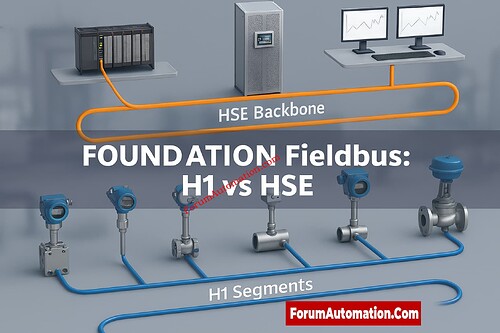What is the difference between H1 and HSE?
What is the difference between H1 and HSE?
FOUNDATION Fieldbus defines two communication levels H1 and HSE each serving different layers of industrial automation. The main difference lies in their data speed, network structure, and intended application areas.
H1 (Field Level Communication): H1 runs at 31.25 kbps and uses a two-wire, twisted-pair cable to send both power and data. It connects smart field devices like controllers, transmitters, and actuators directly. H1 has built-in safety features that make it perfect for dangerous work settings. The network employs a Link Active Scheduler (LAS) to control when messages are sent and can function with bus or tree topologies with segments up to 1900 meters long. H1 communication is deterministic and made for real-time control at the process level.
HSE, or High Speed Ethernet, is a backbone network that runs on standard IEEE 802.3 Ethernet infrastructure at speeds of 100 Mbps. It connects many H1 segments, host systems, PLCs, and DCS nodes across the whole plant. HSE uses commercial off-the-shelf (COTS) Ethernet parts and offers redundancy, time synchronization, and fault tolerance through two networks and linking devices. It also works with conventional Ethernet protocols including TCP/UDP, IP addressing, and DHCP.
H1 is meant for controlling and communicating with devices in the field, whereas HSE is a fast, fault-tolerant backbone that connects many H1 networks and higher-level control systems. In modern process automation, they work together to make interoperability, scalability, and data integration throughout the whole company possible.
